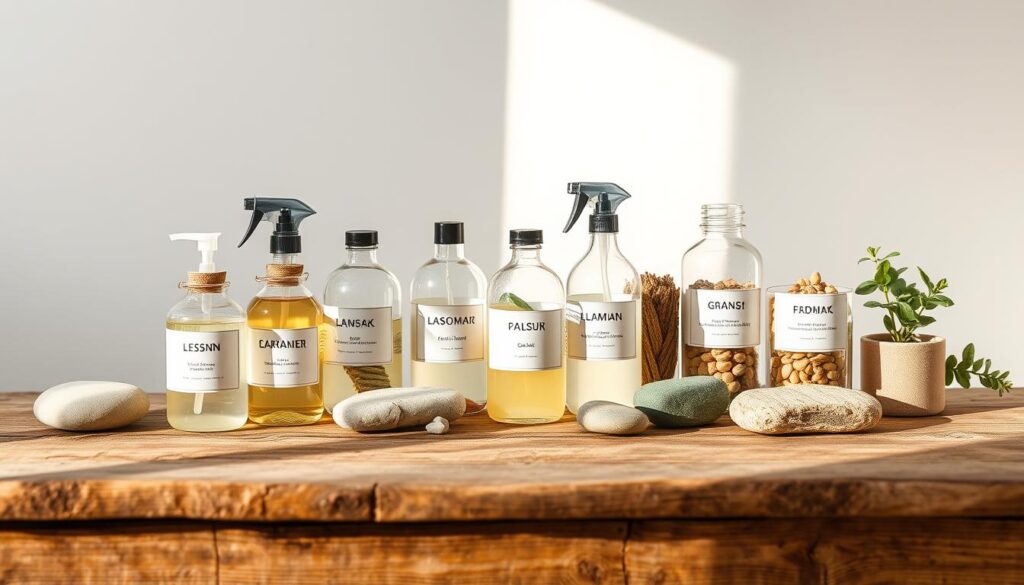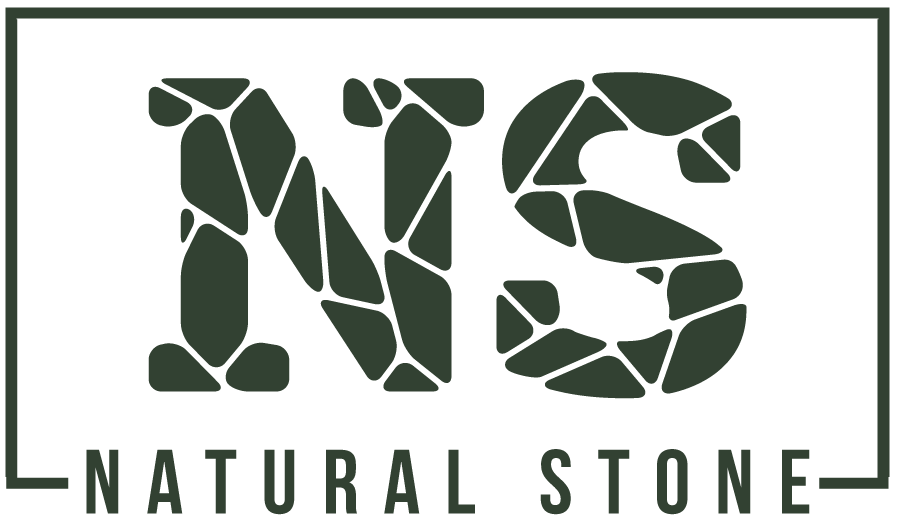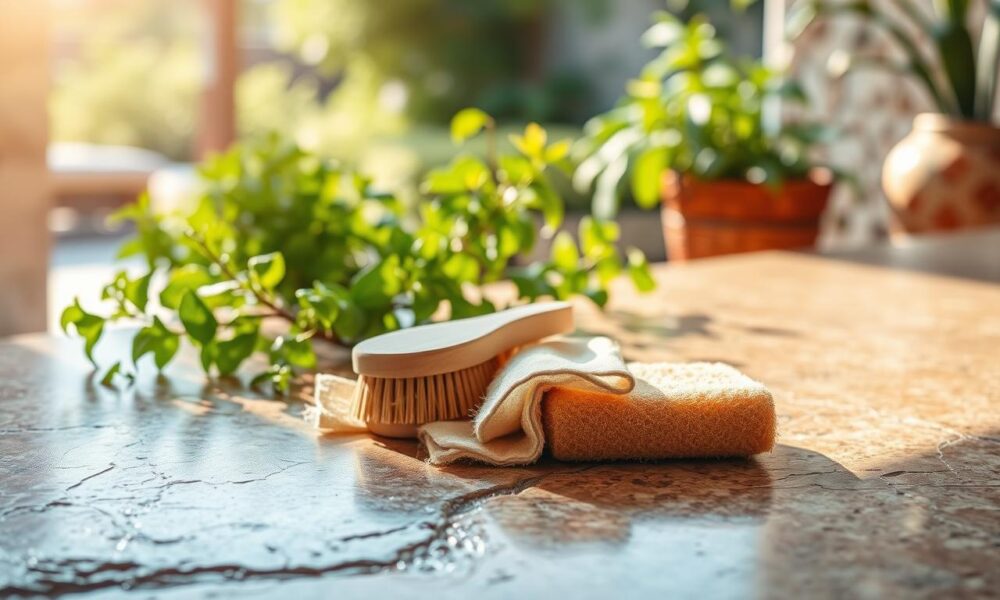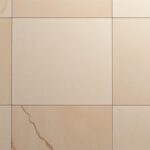Eco-Friendly Cleaning Solutions for Natural Stone | Expert Tips
Natural stone surfaces bring timeless elegance to homes but demand thoughtful maintenance. Unlike synthetic materials, these porous surfaces react strongly to acidic substances and abrasive cleaners. Traditional products often strip protective sealants or etch delicate finishes, leading to costly repairs.
pH-neutral formulas offer the ideal balance for routine care. They remove dirt without compromising the stone’s mineral composition or polished appearance. This approach maintains structural integrity while preventing dullness caused by harsh chemicals.
Environmentally conscious methods provide dual benefits. Gentle ingredients protect groundwater systems and indoor air quality while preserving veining patterns unique to each slab. Proper techniques also extend surface longevity, reducing replacement frequency and material waste.
This guide details science-backed strategies for maintaining marble countertops, limestone floors, and other natural stone features. Discover how to select appropriate tools, create custom cleaning blends, and implement preventive care routines that honor both your surfaces and the planet.
Key Takeaways
- Specialized pH-balanced products prevent surface degradation
- Acidic substances damage calcium-based stones like marble
- Regular sealing maintains protective barriers in porous materials
- Gentle mechanical cleaning preserves polished finishes
- Essential oils offer natural antimicrobial properties
- Proper technique prevents environmental contamination
Introduction to Eco-Friendly Stone Care
Stone features in homes demand specialized care to preserve their integrity. Unlike manufactured materials, these geological formations interact dynamically with their environment through microscopic pores and mineral content.
The Unique Challenges of Geological Surfaces
Sedimentary and metamorphic varieties like marble contain calcium carbonate that dissolves in vinegar-based solutions. Even diluted citrus cleaners leave permanent etch marks on polished countertops. Granite’s crystalline structure resists acids but degrades when exposed to alkaline bleach formulas.
Porosity remains the primary concern. Unsealed slabs absorb oils and pigments from spills, while harsh scrubbing erodes protective sealants. Industry studies show 38% of surface damage stems from improper cleaning techniques rather than natural wear.
Advantages of Responsible Maintenance
Gentle pH-balanced formulas prevent chemical reactions that weaken stone matrices. Plant-derived ingredients break down grime without leaving toxic residues in waterways. Microfiber cloths lift contaminants instead of grinding them into pores.
Regular sealing cycles reduce replacement needs by 60%, according to architectural preservation data. This approach maintains veining patterns while minimizing landfill waste from prematurely damaged installations. Later sections explore specific protocols for balancing efficacy with ecological safety.
Why Natural Stone Needs Special Cleaning Consideration
Stone formations develop unique mineral compositions over millennia, creating microscopic pores that interact with modern environments. This structural complexity requires tailored maintenance strategies to avoid irreversible harm.
The Science Behind Surface Vulnerability
Calcium-based materials like marble dissolve when exposed to acidic substances. A 2022 National Stone Institute study found alkaline cleaners degrade granite’s crystalline structure by 19% faster than pH-neutral alternatives. Porosity allows liquids to penetrate up to 3mm deep, trapping contaminants that cause discoloration.
Top Errors Accelerating Surface Degradation
Common missteps include:
- Vinegar applications: Even diluted solutions etch polished finishes within 30 seconds
- Scouring pads: Abrasives scratch sealants, increasing stain absorption by 40%
- All-purpose cleaners: Harsh chemicals break down protective barriers in 5-7 uses
Industry guidelines from stone restoration experts reveal 73% of homeowners use damaging products. Proper care combines gentle mechanical action with formulas matching the material’s pH needs, as detailed in sustainable maintenance protocols.
Eco-Friendly Cleaning Solutions for Natural Stone
Specialized maintenance requires solutions that respect both mineral compositions and environmental impact. Two categories dominate modern stone care: pH-balanced formulas and botanical-based preparations.
pH-Neutral Cleaners
pH-neutral cleaners (6.5-7.5 pH) prevent chemical reactions that degrade calcite-rich materials. These formulas dissolve dirt without altering surface textures or dissolving protective sealants. Advanced versions contain polishing agents that enhance veining visibility while repelling water spots.
Plant-Based Cleaning Products
Botanical extracts and coconut-derived surfactants power next-generation stone-safe solutions. Brands like ECOS and Blueland use citrus oils for grease cutting and baking soda for gentle abrasion. These biodegradable options leave no toxic residues, protecting aquatic ecosystems during runoff.
Third-party testing shows plant-based cleaning products remove 98% of common contaminants from stone surfaces. Their non-corrosive nature makes them ideal for daily use on marble showers or travertine patios. Unlike conventional options, they won’t strip wax finishes or dull polished edges.
When selecting products, verify certifications like Green Seal or EPA Safer Choice. These ensure formulations meet strict safety standards for porous natural stone. Combine commercial solutions with microfiber cloths for streak-free results that honor geological artistry.
DIY Eco-Friendly Cleaning Recipes
Homeowners can craft effective maintenance blends using common household ingredients. These recipes balance cleaning power with material safety when properly formulated.

Daily Maintenance Blends
For routine care, combine:
| Ingredient | Measurement | Use Case |
|---|---|---|
| Mild dish soap | 1/4 cup | General surface cleaning |
| Warm water | 2 cups | Dilution base |
| Essential oils (optional) | 2-3 drops | Antimicrobial boost |
Mix in a spray bottle. Wipe surfaces with a damp microfiber cloth, then dry immediately. Test new formulas on cabinet undersides before full application.
Targeted Stain Treatments
Create a baking soda paste for stubborn marks:
- Combine 3 parts powder with 1 part water
- Apply to affected area using circular motions
- Rinse thoroughly within 5 minutes
Citrus extracts like lemon juice help dissolve organic debris but require extreme caution. Never use acidic components on marble or limestone. Always prioritize pH-neutral ingredients to prevent etching.
Maintenance Tips for Long-Term Stone Care
Proper upkeep preserves stone surfaces’ beauty and structural integrity for decades. A structured approach minimizes risks while enhancing durability. Follow these science-backed strategies to protect your investment.
Start with daily maintenance using untreated microfiber cloths. These trap dust particles without abrasive action. Wipe countertops in circular motions to prevent streaking, then dry thoroughly. For floors, sweep before damp-mopping to avoid grinding debris into pores.
Address spills immediately using dedicated cleaning products. Blot liquids instead of wiping to limit absorption. Acidic substances like wine require pH-neutral solutions applied within 90 seconds. Dry the surface completely to prevent mineral deposits from hard water.
| Maintenance Task | Frequency | Recommended Products |
|---|---|---|
| Sealer Application | Every 12-24 months | Water-based impregnators |
| Deep Cleaning | Quarterly | Plant-derived stone soap |
| Grout Inspection | Biannually | Non-abrasive grout brushes |
Use color-coded cloths for different surfaces to prevent cross-contamination. Designate specific tools for kitchen counters versus bathroom tiles. This prevents transferring oils or soap residues between materials.
Consistent care reduces the need for aggressive cleaning methods. Well-maintained installations retain their protective barriers, resisting stains and etching. Industry data shows proper routines extend surface life by 7-10 years compared to reactive approaches.
Product Recommendations and Application Best Practices
Selecting appropriate maintenance solutions ensures geological surfaces retain their beauty without environmental harm. Industry-approved formulas combine efficacy with material safety, tailored to specific mineral compositions.

Top-Performing Maintenance Solutions
Three cleaners excel in third-party testing for stone safety and ecological impact:
- ECOS Stone & Granite Cleaner: Plant-powered formula with pH-balancing technology for stones like marble
- Better Life Granite and Stone Cleaner: USDA-certified bio-based solution resisting water spots on polished surfaces
- Seventh Generation Stone Surface Cleaner: EPA Safer Choice-certified blend tackling grease without corrosive agents
Precision Application Methods
Maximize results while protecting stone surfaces with these techniques:
- Spray cleaner 6-8 inches from the surface, covering 2 sq. ft. at a time
- Wipe in concentric circles using untreated microfiber cloth prevent abrasion
- Dry immediately with a separate lint-free towel to avoid mineral deposits
Designate color-coded cloths for different materials—blue for granite, white for calcareous stones like marble. This prevents cross-contamination between kitchen counters and bathroom vanities. Always test new products on cabinet undersides before full-scale use.
Sustainable Practices & Preventive Measures
Implementing sustainable habits extends the lifespan of geological installations while minimizing ecological footprints. Thoughtful protocols reduce reliance on harsh agents and preserve material integrity through strategic prevention.
Using Reusable Tools and Color-Coded Rags
Reusable microfiber systems capture 99% of dirt particles without chemical additives. These washable cloths outperform disposable options, reducing landfill contributions by 83% according to EPA data. Designate colored rags for specific tasks:
| Cloth Color | Purpose | Surface Type |
|---|---|---|
| White | Dusting | Polished marble |
| Blue | Spill cleanup | Granite counters |
| Green | Sealer application | Limestone floors |
Color segregation prevents cross-contamination between stone surfaces and cleaning agents. A 2023 NSF International study found dedicated cloth systems lower chemical transfer risks by 67% compared to multi-purpose rags.
Place doormats at entryways to trap 72% of abrasive particles before they reach surfaces. Pair this with weekly dry-mopping routines to minimize grit accumulation. For stones like travertine, use non-slip pads under appliances to prevent micro-scratches.
Select maintenance products with verified pH neutrality. Balanced formulas avoid reactions that damage stone matrices over time. Third-party certifications like Green Seal ensure solutions meet safety standards for porous materials.
Conclusion
Preserving geological surfaces requires merging scientific knowledge with practical care strategies. Research confirms acidic substances like lemon juice etch calcium-rich materials, while abrasive scrubbing accelerates wear. This understanding shapes effective maintenance protocols that honor both material integrity and environmental responsibility.
pH-balanced formulas and plant-derived products, like those from ECOS and Seventh Generation, demonstrate how modern solutions remove grime without compromising protective sealants. These options prevent long-term damage stone issues while supporting sustainable practices—a critical balance for homeowners.
Consistent care routines extend surface longevity dramatically. Simple acts—immediate spill cleanup, proper drying techniques, and scheduled sealing—reduce restoration needs by over 60% according to preservation experts. Prioritizing prevention over reactive measures keeps installations pristine.
For complex challenges, consult certified stone care specialists who utilize diamond pads and impregnating sealers. By combining informed choices with disciplined habits, property owners safeguard their investments while contributing to ecological stewardship—proving responsible maintenance elevates both aesthetics and durability.



